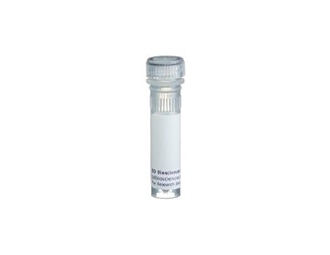-
Reagents
- Flow Cytometry Reagents
-
Western Blotting and Molecular Reagents
- Immunoassay Reagents
-
Single-Cell Multiomics Reagents
- BD® AbSeq Assay
- BD Rhapsody™ Accessory Kits
- BD® Single-Cell Multiplexing Kit
- BD Rhapsody™ Targeted mRNA Kits
- BD Rhapsody™ Whole Transcriptome Analysis (WTA) Amplification Kit
- BD Rhapsody™ TCR/BCR Profiling Assays for Human and Mouse
- BD® OMICS-Guard Sample Preservation Buffer
- BD Rhapsody™ ATAC-Seq Assays
-
Functional Assays
-
Microscopy and Imaging Reagents
-
Cell Preparation and Separation Reagents
-
Dehydrated Culture Media
-
- BD® AbSeq Assay
- BD Rhapsody™ Accessory Kits
- BD® Single-Cell Multiplexing Kit
- BD Rhapsody™ Targeted mRNA Kits
- BD Rhapsody™ Whole Transcriptome Analysis (WTA) Amplification Kit
- BD Rhapsody™ TCR/BCR Profiling Assays for Human and Mouse
- BD® OMICS-Guard Sample Preservation Buffer
- BD Rhapsody™ ATAC-Seq Assays
- Canada (English)
-
Change country/language
Old Browser
Looks like you're visiting us from {countryName}.
Would you like to stay on the current country site or be switched to your country?


Regulatory Status Legend
Any use of products other than the permitted use without the express written authorization of Becton, Dickinson and Company is strictly prohibited.
Preparation And Storage
Product Notices
- Since applications vary, each investigator should titrate the reagent to obtain optimal results.
- Please refer to www.bdbiosciences.com/us/s/resources for technical protocols.
- Caution: Sodium azide yields highly toxic hydrazoic acid under acidic conditions. Dilute azide compounds in running water before discarding to avoid accumulation of potentially explosive deposits in plumbing.
Companion Products

.png?imwidth=320)
The GR20 monoclonal antibody specifically binds to CD119, the α chain of the interferon γ (IFN-γ) receptor. This receptor is expressed by mouse leukocytes, endothelial, and epithelial cells, but not by mature erythrocytes. GR20 mAb recognizes an epitope (susceptible to certain fixatives) in the ligand-binding site of the receptor. It can block the binding of mouse IFN-γ; therefore, it can inhibit IFN-γ .mediated effects including the activation of mouse macrophages for tumor cell killing. IFN-γ has been reported to induce the expression of Ly-6A/E antigen on cell lines and normal B lymphocytes, and the GR20 antibody is capable of inhibiting the IFN-γ.induced expression of Ly-6A/E on the mouse B lymphoma line A20. The binding of the GR20 antibody to CD119 is inhibited by IFN-γ. This antibody reportedly does not have any agonist effect.
Development References (4)
-
Basu M, Pace JL, Pinson DM, Hayes MP, Trotta PP, Russell SW. Purification and partial characterization of a receptor protein for mouse interferon gamma. Proc Natl Acad Sci U S A. 1988; 85(17):6282-6286. (Immunogen). View Reference
-
Codias EK, Malek TR. Regulation of B lymphocyte responses to IL-4 and IFN-gamma by activation through Ly-6A/E molecules. J Immunol. 1990; 144(6):2197-2204. (Biology). View Reference
-
Cofano F, Moore SK, Tanaka S, Yuhki N, Landolfo S, Appella E. Affinity purification, peptide analysis, and cDNA sequence of the mouse interferon gamma receptor. J Biol Chem. 1990; 265(7):4064-4071. (Biology). View Reference
-
LeClaire RD, Basu M, Pinson DM, et al. Characterization and use of monoclonal and polyclonal antibodies against the mouse interferon-gamma receptor.. J Leukoc Biol. 1992; 51(5):507-16. (Biology). View Reference
Please refer to Support Documents for Quality Certificates
Global - Refer to manufacturer's instructions for use and related User Manuals and Technical data sheets before using this products as described
Comparisons, where applicable, are made against older BD Technology, manual methods or are general performance claims. Comparisons are not made against non-BD technologies, unless otherwise noted.
For Research Use Only. Not for use in diagnostic or therapeutic procedures.
Report a Site Issue
This form is intended to help us improve our website experience. For other support, please visit our Contact Us page.